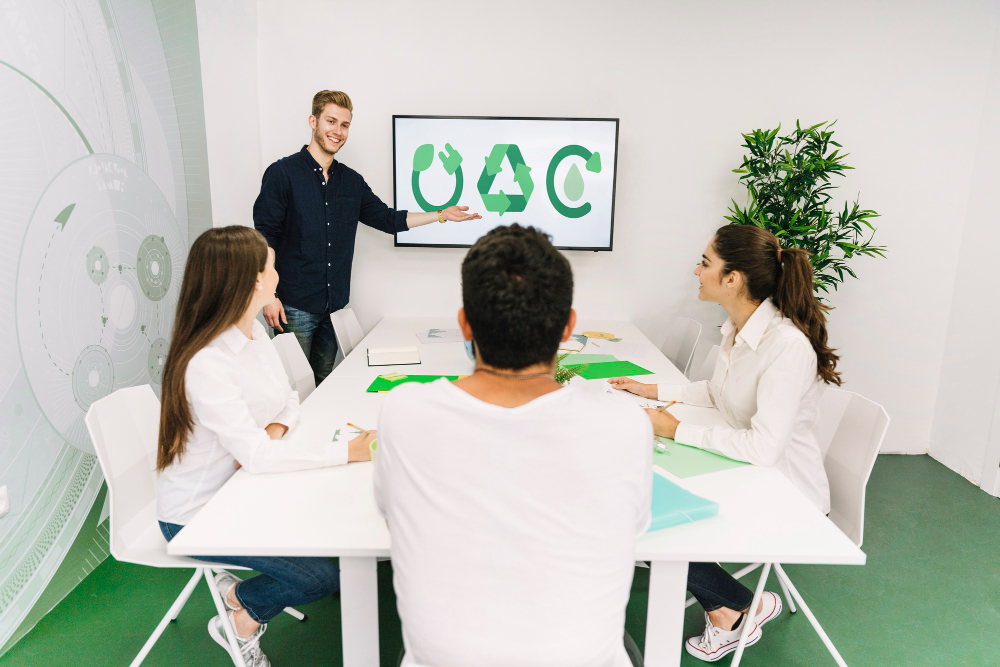Sustainability in construction isn’t just a buzzword—it’s becoming a critical factor in driving profitability. While many contractors still associate sustainability with extra costs or complicated processes, the truth is that reducing waste, optimizing resource use, and incorporating eco-friendly materials can all lead to significant financial gains. In fact, sustainability is a smart financial decision that can boost your bottom line.
In this blog, we’ll explore how adopting sustainable practices can help contractors save money, reduce inefficiencies, and ultimately increase their profits. By turning waste into wealth, contractors can transform their businesses for the better—both environmentally and financially.
How Waste Is Eating Into Your Profits
In traditional construction, waste is a given. However, what many contractors don’t realize is just how much waste costs them. Material waste, miscommunication on job sites, and over-ordering supplies all add up quickly, inflating project costs. These inefficiencies can drain your resources and cut into your profit margins.
Material Waste: From leftover materials to unused supplies, a large percentage of construction waste ends up in landfills, costing contractors both money and time. Over-purchasing materials because of poor inventory management or inaccurate project estimates can lead to expensive waste disposal fees and higher material costs.
Labor Inefficiency: If your team spends more time on the job site than necessary due to poor scheduling or disorganization, you’re paying for unproductive hours. Rework due to miscommunication or mistakes also eats into your budget.
Disposal Costs: When waste piles up, contractors must pay for disposal, adding unnecessary costs to the project. In fact, construction and demolition waste make up nearly 40% of all waste generated globally.
By recognizing the hidden costs of waste, contractors can begin to make smarter choices that benefit both their business and the environment.
Turning Waste Reduction into Profit
Reducing waste isn’t just about being green—it’s about improving your financial health. Here’s how waste reduction directly impacts your profitability:
- Material Savings: By streamlining your inventory management and purchasing materials more accurately, you’ll minimize waste and avoid over-ordering. You’ll only purchase what you need, reducing the amount of unused materials left behind at the end of a project.
- Reduced Disposal Fees: Fewer materials to throw away means less money spent on waste disposal. Not only does this lower costs, but it also helps keep your projects within budget.
- Improved Efficiency: The more organized your team is, the fewer hours are wasted on job sites. Streamlined scheduling and proper planning help your crew stay on task, reducing downtime and increasing productivity.
- Better Resource Allocation: Using digital tools to track resources in real time allows you to manage inventory, labor, and materials efficiently. By identifying areas where you’re overusing or underusing resources, you can make adjustments that lead to savings.
In the end, reducing waste means you’re not only being responsible for the environment but also protecting your profit margins.
Optimizing Resources for Greater Financial Returns
Efficient resource management is one of the easiest ways to boost your profits. When you know exactly what materials you have on hand and how much labor is required for each task, you can reduce unnecessary costs and increase your cash flow.
Inventory Management: Implementing an effective system for tracking materials will allow you to minimize waste and avoid buying more than you need. This also helps to prevent the risk of understocking, which can delay projects and lead to costly emergency orders.
Project Scheduling: One of the key factors in increasing efficiency is improving scheduling. By aligning your team’s work schedule with project deadlines and availability, you can ensure that resources are used efficiently. This reduces downtime and increases worker productivity—leading to more projects completed on time and within budget.
Real-Time Tracking Tools: Technology offers contractors the ability to track every aspect of a project in real time. Digital project management tools can help manage inventory, schedule tasks, and monitor resource use, which increases overall efficiency. With the right tools, you’ll make more accurate bids, minimize delays, and ensure better financial outcomes.

Going Green Is Profitable
Eco-friendly materials are not only good for the planet—they can also save you money. While some sustainable materials might have a higher initial cost, many offer significant long-term savings that ultimately make them more cost-effective.
Energy-Efficient Materials: Materials such as high-quality insulation, energy-efficient windows, and eco-friendly flooring can reduce energy costs for your clients. This can make the projects more attractive, allowing you to charge a premium for green features.
Government Incentives: Many regions offer financial incentives for businesses that adopt sustainable practices. Tax rebates, energy-efficient grants, and other incentives can help offset the higher upfront costs of green materials.
Client Willingness to Pay More: Eco-conscious clients are often willing to pay more for sustainable construction, especially when they know it will reduce their long-term operating costs. By incorporating green materials into your projects, you increase your potential for higher bids and more lucrative contracts.
Additionally, eco-friendly materials often come with warranties that can save clients money in the long run, further making your services more attractive and competitive.
Sustainability Pays Off in the Long Run
Sustainability doesn’t just help in the short term; it creates lasting financial benefits. Contractors who invest in sustainability today will reap the rewards for years to come. Here’s why:
- Long-Term Client Relationships: Sustainable projects often lead to repeat business. Clients who see the benefits of your green efforts are more likely to return for future projects. Additionally, their positive experiences can lead to referrals, helping you expand your client base.
- Improved Marketability: In a competitive market, sustainability is a selling point. When you market your business as an eco-friendly contractor, you attract a growing segment of clients who value sustainability and are willing to pay a premium for it.
- Predictable Savings: Sustainable construction often leads to lower operating costs for the buildings you create. Whether it’s reduced energy consumption or lower maintenance costs, sustainable buildings provide long-term savings for clients, which makes your services more valuable.
- Better Brand Image: Adopting sustainable practices enhances your brand reputation, helping you build trust with clients and attract projects that are in line with your values. It sets you apart as a responsible business that’s contributing to a greener future.
Conclusion
Sustainability isn’t just about being environmentally responsible—it’s also about boosting your bottom line. By reducing waste, managing resources more efficiently, and adopting eco-friendly materials, contractors can increase their profitability and improve their business in ways that benefit both the planet and their financial future.
Start making small changes today, and watch how they turn waste into wealth for your business. By integrating sustainability into your operations, you’re setting yourself up for a greener, more profitable future.



